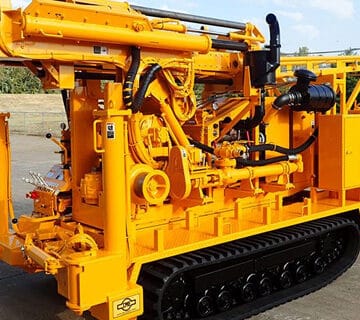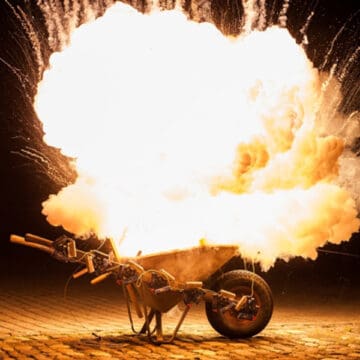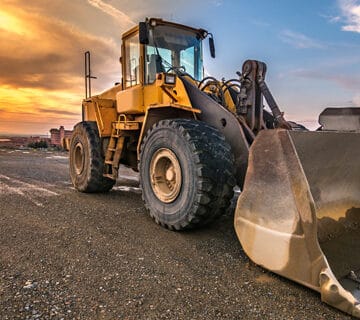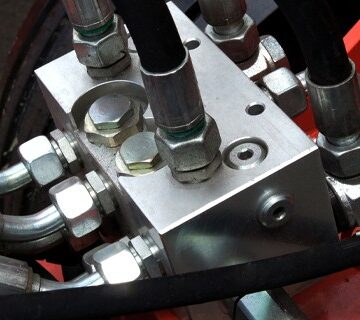For fast and easy connection and disconnection of pneumatic lines, quick disconnect fittings are an ideal solution. Quick disconnects can be used to connect power sources like air compressors to the tool and usually consist of two parts; the coupler (female part) and the plug (male part). Within the coupler is often a valve that will automatically shut off the air supply when disconnected from the component, leaving the system pressurized. Quick disconnects are usually operated by hand and don’t require specialized tooling to assemble or disassemble.
But will any quick disconnect work?
The short answer is no. While quick disconnects remain a simple solution to connect various components in the system, there are a few things to keep in mind. There are several different shapes, or profiles, of fittings that may make up your pneumatic system. We’ll identify the top five basic profiles, courtesy of Dixon Valve, and help you choose the right one for enhanced serviceability, leak prevention and proper air conveyance.
Have questions on creating the right connections for your pneumatic lines?
Give us a call at 314-638-6500 OPTION 4.
How to Identify the 5 Basic Pneumatic Profiles from Dixon Valve
1. Industrial (Dixon DF-Series)
The most commonly used disconnect coupling is the industrial profile. You’ll find these in various system set-ups.

2. Automotive (Dixon J-Series)
The second-most common disconnect coupling is not very different from the industrial profile. Choosing the automotive profile over the industrial one often comes down to preference. Though there are few differences, the industrial and automotive profiles are NOT interchangeable.

3. ARO (Dixon M-Series)
Also known as Milton A-style couplings, the ARO is typically used on pneumatic lines in construction and factory automation.

4. Lincoln (Dixon L-Series)
The Lincoln disconnect coupling resembles the top hat worn by our 16th president.

5. European (Dixon CJ-Series)
Aptly named due to its prevalence in European markets, the European has a high-flow inner diameter and valve design.

View the entire 2021 Quick Coupling Catalog from Dixon Valve. Download now.
You’ll notice there are few differences between these five basic profiles, but there is one important caveat; the styles are not interchangeable. Choosing the wrong quick disconnect can result in poor airflow performance and air leaks, as well as reduced pressure and vacuum capability.
When selecting system components, be sure to look at the existing plug materials and internal seal requirements before selecting the matching disconnect coupling.
3 Simple Steps to Choosing the Right Pneumatic Connections and Disconnects
1. Consider the environment. Will the system be exposed to extreme weather, water or other corrosive elements? If so, choose stainless steel couplings. Will the system be exposed to high pressures? Carbon steel offers better resiliency against high pressure flow.
2. Identify the profile of the plug. Which profile from above do you have? Make sure to match any new parts to that profile. Use the profile shape chart below for assistance.

3. Measure the diameter and tip length of the plug to identify the correct body size you’ll need. Don’t forget to measure the port size of the tool as well. Here’s an example below:

STAMPED for Safety: Follow these Best Practices for Coupling Selection
Any time that a hose component is replaced, whether on a pneumatic or hydraulic system, there is a possibility of failure. Poor part selection or improper installation practices can cause property damage or injury. We recommend using the S.T.A.M.P.E.D. checklist to confirm your part selection is suitable for your specific application.
Download our S.T.A.M.P.E.D. form now to get started.
1. SIZE: Consider the size of your coupler, hose and the outside diameter of the tube when choosing hose fittings. What are the maximum pressure requirements? Will the system be installed in a tight spot?
2. TEMPERATURE: Consider the hose’s average, minimum and maximum operating temperature ranges when choosing various hose fitting materials and seals like O-rings. Be sure to consider factors such as flame- and heat resistance as well.
3. APPLICATION: Consider where and how your hose will be used. Will it be used indoors or outdoors? Will there be excessive abrasion, vibration, unusual mechanical loads or exposure to external conditions such as moisture, saltwater, fertilizer, oxygen, oil, acids or chemicals? Choose coatings and special platings for your fittings that can minimize corrosion or breakdown of the fitting.
4. MEDIA: What kind of material will be carried through your hose? Special materials require specialized hose materials and fitting components that are compatible to protect the operator and surroundings.
5. PRESSURE: Consider your system’s average operating pressures and its compatibility with the maximum pressures associated with your hose assembly. Is your pressure static or dynamic? Static systems are free of vibration, pressure surges and shocks. Dynamic systems commonly experience pressure spikes. Your hose assembly’s working pressures must be equal to or greater than the system pressure itself for safety and effectiveness.
6. ENDS: What kind of end is required to connect hoses to the system? Remember that these areas are the weakest link in your hose assembly and having this information will help you identify the proper fitting and clamping systems to use. Also, consider the valving configuration that is ideal for your system.
7. DELIVERY: Are there any side-load, vibration or swiveling concerns? Will the system be exposed to environmental factors? Does your system require a safety sleeve lock? Once a new hose assembly has been put into service, it’s important to fully inspect regularly and look for worn-out fittings, clamps or damaged hoses.
*Always refer to OSHA standards 29 CFR 1926.302 and 29 CFR 1926.603 when installing and replacing pneumatic hose fittings and quick disconnects.
Give us a call at 314-638-6500 OPTION 4 and speak to a knowledgeable representative today!
Superior Industrial Supply knows how important it is to have durable and reliable equipment for your most demanding applications. That’s why we partner with top-rated suppliers like Dixon Valve. Give us a call at 314-638-6500 OPTION 4 or 800-783-6501 and let us know how we can help you find the products, services and advice you need to do just that.
Don’t forget to visit our website or read our blog for more information!





